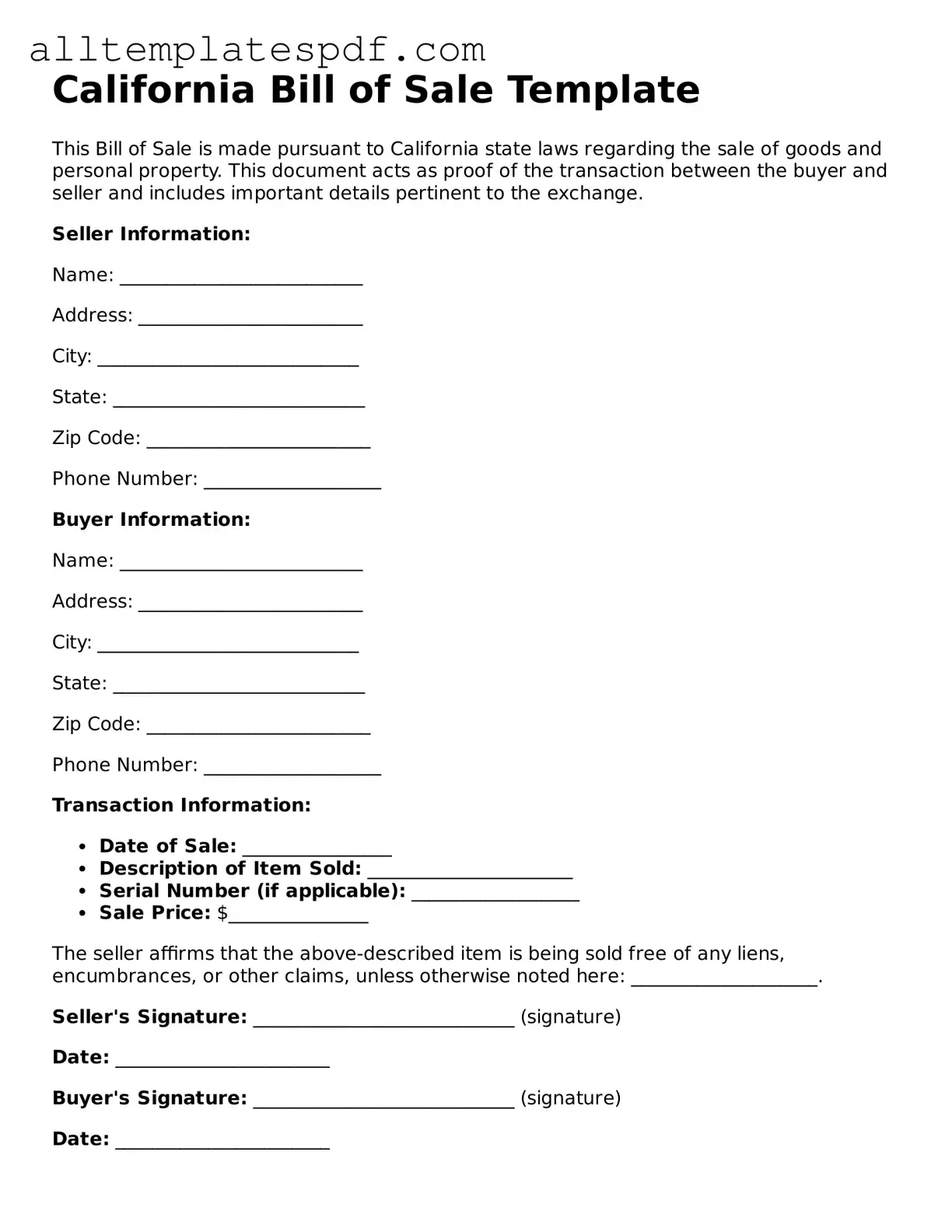Completing the California Bill of Sale form is a straightforward process, but many individuals make common mistakes that can lead to complications. One frequent error is not providing complete information about the vehicle. Buyers and sellers must include details such as the make, model, year, and Vehicle Identification Number (VIN). Omitting any of this information can cause issues with registration and ownership transfer.
Another common mistake is failing to include the correct purchase price. The form requires the seller to specify the amount the buyer paid for the vehicle. If this information is inaccurate or missing, it can lead to disputes later on. Additionally, it is essential to ensure that the price reflects the actual transaction to avoid potential legal issues with tax authorities.
People often overlook the importance of signatures. Both the buyer and seller must sign the Bill of Sale for it to be valid. Without these signatures, the document lacks legal standing, which can create problems during the transfer of ownership. It’s crucial to double-check that both parties have signed before finalizing the sale.
Incorrect dates are another frequent oversight. The date of the transaction should be clearly indicated on the form. An incorrect date can lead to confusion about when the sale occurred, which can affect tax obligations and registration. Always verify that the date matches the actual day of the transaction.
Finally, not keeping a copy of the completed Bill of Sale can lead to significant issues down the line. Both parties should retain a copy for their records. This document serves as proof of the transaction and can be essential if disputes arise in the future. Failing to keep a copy may result in a lack of evidence to support claims regarding the sale.
